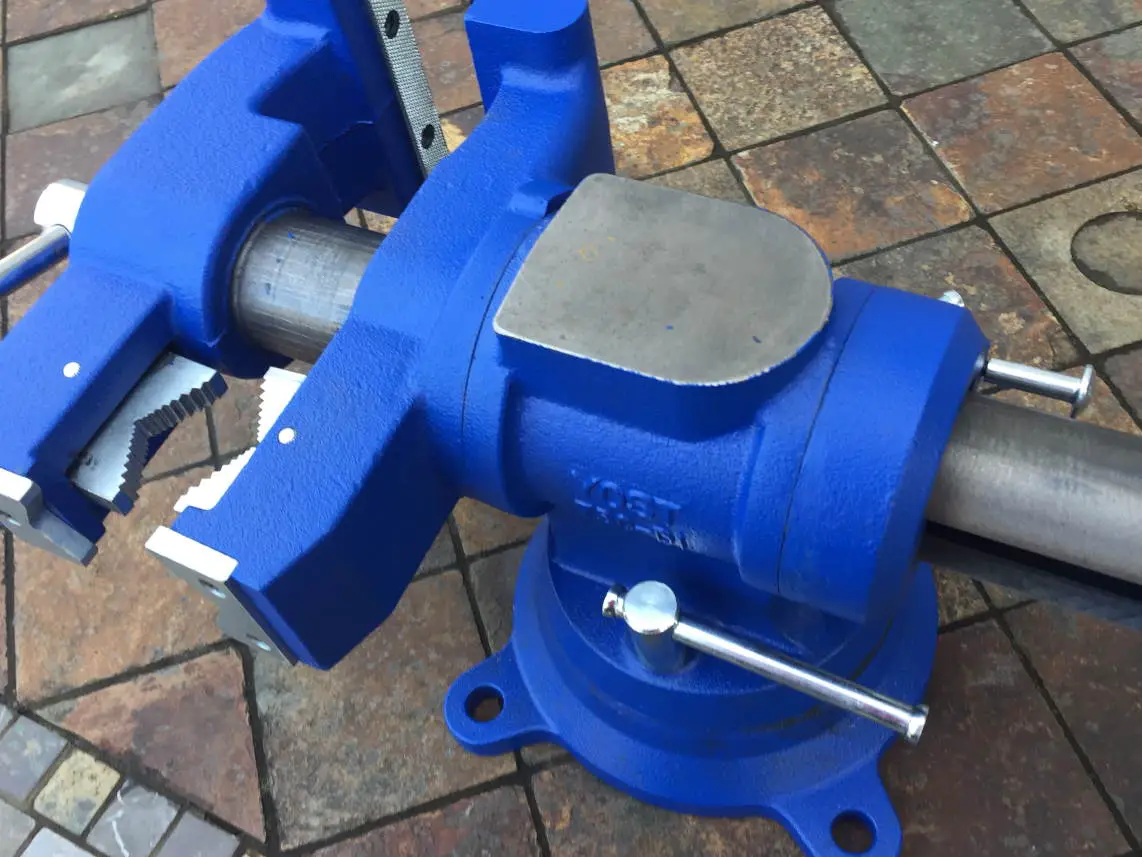
I will begin to answer this question by asking a clarifying question: the size of what? A multi-purpose vise has a number of different dimensions. These include:
- Vise jaw width
- Vise total weight
- Vise throat depth
- vise handle length
- vise jaw opening
A vise can vary among all these dimensions. To further complicate matters, “multi-purpose” is not some standardized label. It’s more of a marketing term that indicates a vise can be used to solve different classes of problems. More specifically, it usually just means a vise has a pipe jaw in addition to a normal vise jaw.
At any rate, I will try and make some imperfect generalizations that answer the question above.
Table of Contents
Total Weight
When I tried to answer this exact same question for engineer’s vises, I came up with a weight range of 1.5lb (.68kg) all the way up to 220lb (99.79kg). The range for multipurpose vises does not seem to be as large, with most weighing between 18lb-75lbs (8.16kg-34.02kg) . Multi’s are seen as more niche, so it’s not too surprising that they have a reduced ranged compared to the models labeled as engineer vises.
Jaw Width
The jaw width is a measure of how wide the jaws are along the horizontal axis.
Most vises will have a jaw widths between 3″-8″ (25.4mm-203.2mm). As always, you can find exampled that buck the trend.
Vise Jaw Opening
The vise jaw opening is a measurement that tells you how far apart you can spread the two vise jaws. Most vises will have a range between 3″-12″ (76.2mm-304.8mm). Reversible vises sometimes have configurations that let you go even wider.
Vise Throat Depth
The vise throat depth measures the vertical space between the top of the vise jaw down to the leadscrew/slide. Most models will have a range between 2″ and 8″ (50.8mm-203.2mm).
What should you optimize for when choosing a multi-purpose vise?
It’s easier to put a small work piece in a large vise than it is to put a large work piece in a small vise. Larger vises also tend to be better built and better able to withstand wear and tear.
But I know that’s equivalent to telling people to spend as much money as possible, which is not very practical. A simple rule is to think of the biggest piece of work you could imagine yourself clamping, and then buy a vise that could hold something 1.5x bigger than that. This gives you some wiggle room for unforeseen projects in the future.
If you are still not sure what to optimize for, check out an article I wrote here.